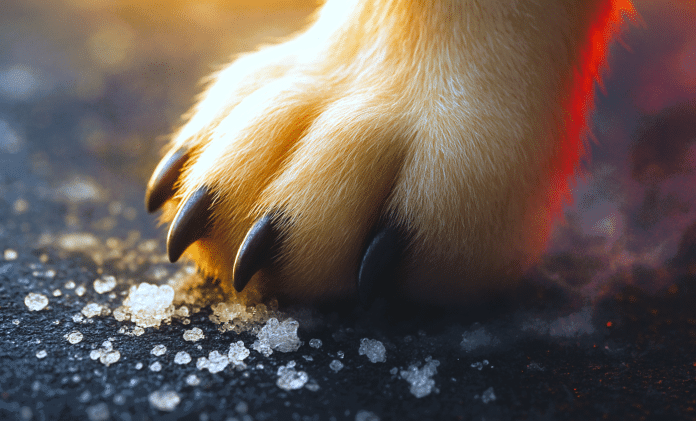Columbia, SC – With the first frost and patchy ice forecast across South Carolina this weekend, veterinarians are urging pet owners to take precautions before heading out on early-morning walks. Even brief exposure to road salt and chemical de-icers—increasingly used during Southern cold snaps—can burn paw pads, irritate skin, and cause toxic reactions if pets lick or ingest them.
Many ice-melt products contain sodium chloride, calcium chloride, or magnesium chloride, chemicals that melt thin layers of ice but are tough on sensitive paws. The crystals can stick between toes and cause redness, dryness, or cracking. When dogs lick their paws afterward, they risk swallowing enough salt to cause vomiting, diarrhea, excessive thirst, or lethargy. In more serious cases, salt ingestion can lead to seizures or kidney damage.
Veterinary experts say pets in Southern states are especially vulnerable because they’re less accustomed to salt exposure, and owners often don’t realize de-icers are in use. Some products may also contain heavy metals or industrial additives that make them more toxic when ingested.
To keep pets safe, veterinarians recommend rinsing paws with warm water after each walk and drying them thoroughly. Applying paw balm or protective wax before heading outside can help prevent irritation, while trimming fur between the toes reduces buildup of salt and ice. Booties can offer extra protection for dogs that tolerate them, and homeowners are encouraged to use pet-safe, chloride-free ice melts on driveways and patios.
With overnight lows dipping into the upper 20s and low 30s across parts of South Carolina, frost and black ice could develop before sunrise. Veterinarians urge pet owners to watch for limping, licking, or hesitation during walks—common signs of irritation or chemical burns.
As the first frost of the season arrives, animal health experts stress that the greatest cold-weather threat to pets isn’t the temperature itself—but the chemicals coating the ground beneath their paws.





